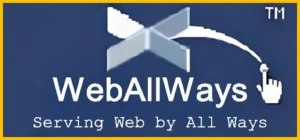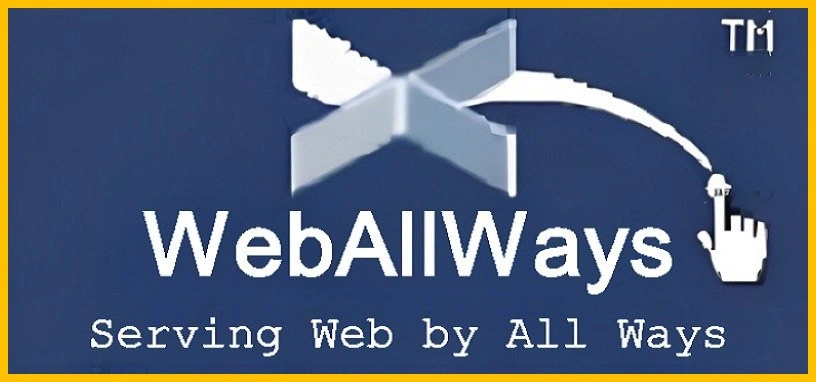
In the competitive world of SEO, one of the most important yet often overlooked aspects of an effective SEO strategy is keyword mapping. If you want to ensure that your website ranks higher on search engines, attracts more traffic, and converts visitors into loyal customers, mastering the art of keyword mapping is essential.
This guide will walk you through the concept of keyword mapping, why it’s crucial for SEO success, and the best free tools you can use to streamline the process. Whether you’re an SEO professional or just getting started, you’ll find valuable insights to take your website optimization to the next level.
What is Keyword Mapping?
At its core, keyword mapping is the process of assigning specific keywords to individual pages on your website. Think of it as the SEO blueprint for your site, where each page is optimized to rank for a targeted keyword or set of keywords.
But keyword mapping is more than just placing a keyword on a page and hoping for the best. It involves strategic planning to ensure that:
- Each page has a clear purpose and targets a unique set of keywords.
- Keyword cannibalization (where multiple pages target the same keyword) is avoided.
- The content is optimized to meet both user intent and search engine algorithms.
Why is Keyword Mapping Important?
Proper keyword mapping is not just about choosing a keyword and placing it on a page. It plays a vital role in the overall structure of your website and how it interacts with search engines. Here’s why it’s so important:
Better Content Strategy
By strategically mapping keywords to your pages, you can create a focused and organized content strategy. This ensures that your content covers all relevant topics without overlap, preventing your pages from competing for the same keywords. It also allows you to target long-tail keywords and specific user queries, helping you cater to diverse audience needs.
Improved Search Engine Rankings
Search engines, like Google, use the content and structure of your website to determine which pages should rank for specific queries. If you map your keywords correctly, each page will have a better chance of ranking for its designated keyword. In turn, this increases your website’s visibility and attracts more organic traffic.
Increased Organic Traffic
Targeting the right keywords means you’re more likely to rank for search terms that align with what users are searching for. This leads to higher-quality traffic—users who are looking for exactly what you offer. The more targeted the traffic, the higher the chances of conversions.
Better User Experience
Keyword mapping ensures that your content is highly relevant to the search queries users enter. It makes it easier for visitors to find the information they’re looking for, which improves their overall experience on your website. When users can easily navigate your content and find what they need, it leads to longer session durations, lower bounce rates, and more conversions.
How to Do Keyword Mapping: A Step-by-Step Guide
While keyword mapping may sound like a complex task, breaking it down into manageable steps can make the process smoother and more efficient. Here’s how to go about it:
Conduct Comprehensive Keyword Research
Before you start mapping keywords to your website’s pages, it’s essential to gather a list of the most relevant and high-performing keywords for your business.
Keyword Research Tools
There are numerous free tools available to help you find the best keywords for your website. These tools can provide insights into search volume, competition, and keyword suggestions:
- Google Keyword Planner – Google’s free tool helps you find keywords, assess their search volume, and check competition levels.
- Ubersuggest – A free tool by Neil Patel that offers keyword suggestions, search volume insights, and SEO analysis.
- Answer the Public – A unique tool that generates keyword ideas based on questions people are asking online. It’s great for discovering long-tail keywords.
- Moz Keyword Explorer (Free Version) – Moz provides keyword data, such as search volume and difficulty levels, in its free version.
- Google Trends – This tool helps you identify trending keywords and seasonal variations that can inform your strategy.
Identify Search Intent
Understanding search intent is crucial for keyword research. Search intent is the purpose behind a user’s query. Typically, there are three main types:
- Navigational Intent: The user is searching for a specific website or page.
- Informational Intent: The user is looking for information on a topic.
- Transactional Intent: The user is ready to make a purchase or take a specific action.
By identifying the intent behind your keywords, you can ensure that your content matches what users are looking for. For instance, “buy running shoes online” has transactional intent, while “how to choose running shoes” indicates informational intent.
Create a Keyword List
Once you have a solid understanding of the keywords you want to target, it’s time to compile a list. This list should include primary, secondary, and long-tail keywords that are relevant to your content.
- Primary Keywords: Broad terms that are central to your website’s focus. For example, “SEO services” or “digital marketing.”
- Secondary Keywords: More specific terms related to your primary keyword. For example, “SEO agency in [city name]” or “local SEO services.”
- Long-Tail Keywords: Longer phrases that are highly specific and typically have lower search volume but are more targeted. For example, “best SEO agency for small businesses in [city].”
Perform a Website Audit
Before you begin assigning keywords to pages, you need to conduct an audit of your website to assess how your content is performing. Take note of which pages are already ranking for specific keywords, as well as which pages need optimization. This is also an opportunity to identify any keyword cannibalization issues, where multiple pages may be competing for the same keyword.
- Evaluate Page Relevance: Does the content of each page match the keywords you want to rank for?
- Look for Gaps in Content: Are there any important topics or keywords that haven’t been addressed yet?
- Ensure Clear Keyword Targeting: Does each page clearly target a specific set of keywords, avoiding overlap with other pages?
Map Keywords to Specific Pages
Now, you can begin assigning your keywords to specific pages on your website. This process is where the true magic of keyword mapping happens. Each page on your website should target one primary keyword, as well as related secondary and long-tail keywords. For example:
- The homepage might target a broad term like “SEO services.”
- A service page could focus on “local SEO” and “SEO for small businesses.”
- A blog post might target a long-tail keyword like “how to improve your SEO ranking in 2025.”
Optimize Pages for Assigned Keywords
Once you’ve mapped your keywords to pages, it’s time to optimize those pages. On-page SEO optimization is essential to ensuring your pages rank for the keywords you’ve assigned them.
- Title Tags: Ensure that the title of each page includes your primary keyword.
- Meta Descriptions: Write a compelling meta description that contains your primary and secondary keywords.
- Headings and Subheadings: Use H1, H2, and H3 headings to structure your content and include keywords naturally.
- Body Content: Ensure that your primary and secondary keywords are naturally integrated into the body of your content. Avoid keyword stuffing.
- Internal Linking: Use internal links to connect related pages, which helps with site navigation and encourages search engines to crawl your website more effectively.
Monitor and Adjust Regularly
Keyword mapping is not a one-time task. It’s important to continuously monitor your pages’ performance and make adjustments as needed. You can use tools like Google Analytics and Google Search Console to track keyword rankings, page traffic, and user engagement.
- Evaluate Performance: Are your pages ranking for their mapped keywords?
- Identify Underperforming Pages: Which pages need further optimization?
- Update Content: Refresh and update old content to ensure it’s still relevant and optimized for current search trends.
Best Free Tools for Keyword Mapping
Effective keyword mapping can be done even if you’re on a budget. Here are some of the best free tools available to help you get started with keyword mapping and optimization:
Google Keyword Planner
Google Keyword Planner is a powerful tool that allows you to explore keywords, view search volume data, and understand the competition level for various terms. It’s an essential resource for anyone working on keyword research.
Ubersuggest
Ubersuggest provides valuable insights into keyword search volume, competition, and trends. It’s a fantastic tool for discovering keyword ideas and analyzing your competition. The free version offers a lot of functionality, making it a go-to option for budget-conscious website owners.
Answer the Public
Answer the Public generates keyword ideas in the form of questions, prepositions, and comparisons. It’s particularly helpful for discovering long-tail keywords that can help your website rank for more specific queries.
Moz Keyword Explorer (Free Version)
Moz Keyword Explorer lets you explore keyword difficulty and search volume, making it an excellent resource for understanding your keyword landscape.
Google Trends
Google Trends provides valuable insights into search volume over time, showing the popularity of specific keywords and helping you identify trends in your industry.
Screaming Frog SEO Spider (Free Version)
Screaming Frog SEO Spider’s free version allows you to crawl up to 500 pages on your site, which is great for auditing keyword usage and site performance. This tool can help you find issues related to on-page SEO and keyword optimization.
FAQ About Keyword Mapping
What is keyword cannibalization, and how can I avoid it?
Keyword cannibalization occurs when multiple pages on your site target the same keyword. This can confuse search engines and result in your pages competing against each other, which ultimately harms your rankings. To avoid cannibalization, ensure each page targets a unique keyword and focus on creating content that serves distinct search intents.
How often should I update my keyword mapping strategy?
Keyword mapping is an ongoing process. Regularly assess your keyword performance, track changes in search trends, and adjust your content as needed. At least once every 3-6 months, review your keyword strategy to ensure that your site is targeting the most relevant and high-performing keywords.
Can I use the same keywords for multiple pages?
It’s best to avoid using the same primary keyword for multiple pages. Each page should be focused on one keyword to prevent keyword cannibalization. However, secondary keywords can overlap across pages, as long as they support the content’s focus.
Is keyword mapping only important for SEO?
While keyword mapping is primarily used for SEO, it also enhances your content strategy. By organizing your website content around specific topics and search queries, you ensure that your users can easily find the information they need. This, in turn, improves user experience, engagement, and conversions.
Conclusion
Keyword mapping is one of the most effective ways to structure your website for SEO success. By carefully researching and strategically assigning keywords to your pages, you can improve your rankings, attract more relevant traffic, and ultimately achieve your business goals.
At WebAllWays, we specialize in helping businesses optimize their websites for better search engine performance. If you need assistance with keyword mapping, SEO optimization, or any other digital marketing strategy, our team is here to help.
Start mapping your keywords today, and watch your website rise in the ranks!
